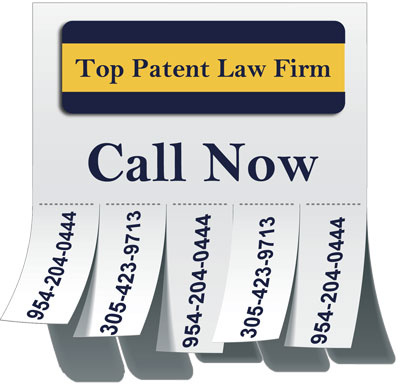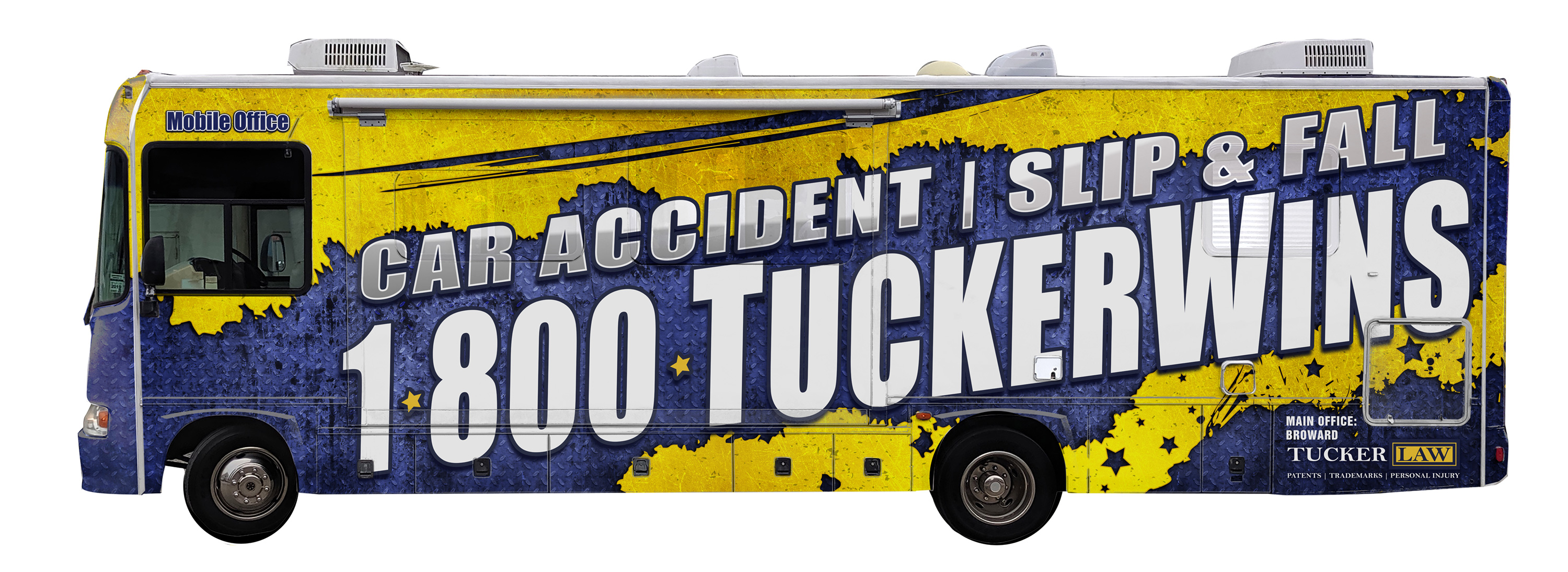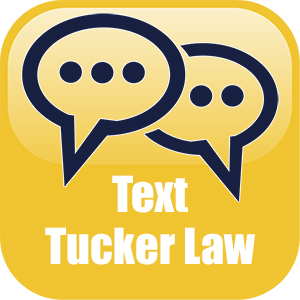

Patent Applications
Tucker Law® has a focus in the area of patent law. Drafting detailed patent applications for complex inventions is one of our main specialties. In order to make sure that your innovation is completely and precisely stated in the patent application and that the level of protection being sought accurately represents the distinctive features of the invention, our skilled team, including patent attorney Matthew Sean Tucker, will work hard to meet your business goals. Our staff will help you navigate the patent application process and help you obtain the protection you need for your invention, regardless matter whether it is mechanical, electrical, software, or involves any other form of invention. Trust the professionals at Tucker Law® to create a patent application that precisely captures the distinctive qualities of your innovation and offers you the highest level of protection. Don’t just lawyer up with any patent attorney, Tucker Up !
Patent Preparation and Prosecution
We at Tucker Law® recognize how crucial it is to safeguard your inventions and intellectual property. Our patent prosecution services are intended to assist you in obtaining the defense for your invention that you are entitled to. You will be guided through the patent application process by our team, which includes patent attorney Matthew Sean Tucker, and given the direction and support required to be successful in obtaining a patent. Regardless of how big or small your company is, we will customize our services to fit your particular needs. Don’t hesitate; take charge of your intellectual property and get your creation the protection it deserves. To find out more about our patent prosecution services, get in touch with Tucker Law® right away.
Patent Licensing
Patents are essential for differentiating companies and gaining a competitive edge. It’s crucial to make the most of your patent rights after receiving them from the USPTO by using licensing and other strategies. Tucker Law can help in that situation. Our team specializes in the creation and administration of complex patent license agreements that cover all facets including audits and royalty payments. With the help of our experience, we will work with you to create a thorough patent licensing plan that makes the most of your intellectual rights and discovers prospective revenue streams. We want to make sure you get the most out of your patent and get a good return on your investment. You can depend on Tucker Law to help you navigate the complicated world of patent licensing and assist you in achieving your business objectives.
Patent Litigation
A successful patent litigation practice with years of experience, Tucker Law® has a solid track record. We stand out because of our significant expertise in both federal court and the Patent Trial and Appeal Board, which gives us the tools we need to win your case. Additionally, our team is well-versed in managing intricate post-patent proceedings, including inter partes reviews. To ensure that you fully grasp the proceedings and your rights, we believe in streamlining complex legal processes and presenting them in a clear and effective manner. Contact the professionals at Tucker Law® if you need assistance with a patent litigation issue. To safeguard your rights and achieve a favorable result, our staff will put forth unwavering effort. Call us at 1-800-TUCKERWINS right away to find out more about how we can assist you.
The type of patent applications available
There are numerous sorts of patents available to safeguard your creation in the complicated and diverse world of patents. Utility patents, design patents, and plant patents are the three primary categories of patents recognized by the USPTO. There are two choices for utility patents: provisional and nonprovisional patent applications. The right kind of patent application, in our opinion at Tucker Law®, depends on your particular objectives and financial capabilities. Because of this, our staff will take the time to learn about your needs and situation. Together, we’ll decide the best strategy for filing a patent application with the USPTO. We are aware that choosing the right kind of patent application for your idea can be difficult. We are here to assist because of this. In order to assist you comprehend your options and make wise choices regarding the patent application procedure, our staff will work directly with you. To find out more about how we can assist you in protecting your invention, contact us right away.


Three major requirements for patentability
Novelty in Patent Applications
An invention must be brand-new and have never been made public before it can be deemed innovative. This covers previous patent papers, disclosures to the public, and any public use.
Usefulness in Patent Applications
For an invention to qualify for a patent, it must have some kind of usefulness or practical application. This criterion is broad and covers a wide range of inventions, provided that they are beneficial.
Nonobvious Variations of Prior Inventions When Patenting
The condition of nonobviousness is the reason why the majority of patent application rejections occur. If an innovation is deemed to be an obvious modification of what already exists, a patent cannot be issued, even if it is original. A person with ordinary expertise in the relevant field would have known the subject matter as a whole would have been obvious, according to the complicated concept of obviousness.
Cases That We Handle
Patent Application Drafting and Prosecution
The first step in getting a patent for your idea is to submit a patent application. The procedure entails preparing a patent application, presenting it to the appropriate patent office, and enduring the examination procedure up until a patent is issued.
Choosing the type of patent that best suits your idea is the first step in the patent application process. There are numerous distinct sorts of patents, each with its own requirements, such as utility patents, design patents, and plant patents.
You must do a thorough patent search to ascertain whether your idea is innovative and non-obvious once you have chosen the sort of patent that is most appropriate for it. This entails looking up any references to your idea in published patent applications, existing patents, and other sources to see if it has already been disclosed or claimed.
You must create a patent application after doing the patent search that contains a thorough description of your invention and its distinguishing characteristics, as well as any relevant drawings and illustrations. Claims must be included in the patent application to specify the level of protection you want for your innovation.
After the patent application is submitted, it will move on to the examination phase, where a patent examiner will look through it to see if it complies with the conditions for a patent. The patent office and the inventor may communicate back and forth during the examination process, and this may include the inventor submitting more data or justifications for the patent application.
The patent will be granted after the examination procedure is finished and the patent office judges that the patent application complies with the requirements. After that, it’s critical to keep the patent current by paying maintenance fees and keeping an eye on the patent landscape to make sure your idea is still protected.
Identifying Your Invention and its Unique Features
Clearly defining your invention and its distinctive characteristics is the first stage in the patent application process. This is crucial because your innovation must be fully and precisely described in the patent application, and the claims must express the level of protection you are requesting.
You should think about the issue your innovation solves, the distinctive qualities that set it apart from competing solutions, and any original or unusual components of the invention while identifying it. It’s crucial to think about your invention’s prospective market as well as any potential uses or applications in the industrial world. Once you have a thorough grasp of your idea, you should include all original or unusual elements that make it special in the patent application. If required, add pictures or images to this description, which should be expressed in simple, unambiguous language.
In describing the level of protection you want for your invention, the claims of your patent application are crucial. The claims must be expressed in language that is both clear and concise, and they must accurately and thoroughly define the invention. It’s crucial to keep in mind that both the claims and the patent application must expressly state the level of protection being sought for the invention. This is significant because the patent office will assess the invention’s patentability based on the patent application and claims.
Conducting a Thorough Patent Search
A comprehensive patent search is a crucial step in the patent application process since it helps to ascertain whether your invention is novel and not immediately obvious. A patent search looks into published patent applications, already-issued patents, and other sources to see if your invention has already been disclosed or claimed.
A patent search can be performed using a number of online databases, including those maintained by the European Patent Office (EPO) and the United States Patent and Trademark Office (USPTO). It is crucial to carry out a thorough search that looks into both already-issued patents and pending patent applications.
It is crucial to think about the scope of your search while doing a patent search and to select keywords and classification codes that appropriately describe your idea. It’s crucial to take into account any pertinent market norms or technological advancements that can affect your invention’s capacity to obtain a patent.
It is crucial to carefully study the findings of the patent search when it is finished in order to ascertain whether any issued patents or published patent applications may have an effect on the patentability of your idea. It is crucial to thoroughly evaluate any pertinent patents or published patent applications you come across in order to ascertain whether they may have an impact on the patentability of your innovation.
Do You Need to Apply For a Patent? Call Us 1-800-TUCKERWINS
Understanding the Different Types of Patent Applications
There are various distinct kinds of patent applications, and each has particular specifications and factors to take into account. The most typical forms of patent applications consist of:
- Utility Patent: A utility patent application is used to safeguard a novel and useful process, machine, production, or composition of matter, as well as any new and beneficial improvements thereto.
- Design Patent Application: A design patent application is used to safeguard an article of manufacture’s decorative design.
- Provisional Patent Application: A provisional patent application is a temporary patent application that can be used to set an early filing date for a non-provisional patent application that is later filed.
- Plant Patent: A plant patent application is used to safeguard a novel and distinctive kind of plant that has undergone asexual reproduction.
- An international patent application is used to request patent protection in several nations by submitting a single application to the World Intellectual Property Organization (WIPO).
It’s crucial to think about the particular requirements of each type of patent and choose the one that best suits your innovation when choosing which type of patent application to submit.
Drafting the Specification and Claims
A patent application’s specification and claims are two essential parts that must be properly crafted to fully and accurately describe your invention and specify the level of protection you are requesting.
The specification is a thorough explanation of your invention that contains a written account of it, a list of its special features, and any drawings or illustrations that would be required to comprehend it completely. The specification needs to thoroughly and accurately define the invention in simple, unambiguous terms.
The most crucial component of a patent application are the claims, which specify the range of protection you want for your innovation. The claims must be expressed in language that is both clear and concise, and they must define the invention completely and accurately. To ensure that the claims characterize the invention in a way that offers the broadest possible scope of protection, they should be properly written.
The outcomes of the patent search and any previous art that can affect the patentability of your invention should be taken into account when crafting the claims. It’s crucial to take into account any pertinent technological advancements or industry standards that can affect the degree of security you’re after.
Differences between a Provisional and a Nonprovisional Patent Application
In the patent application process, a nonprovisional patent application and a provisional patent application are two distinct forms of patent applications with various functions.
An early filing date for a later-filed nonprovisional patent application is established by filing a provisional patent application, which is a temporary patent application. The patent office does not fully examine a provisional patent application, but it does provide the inventor a priority date for the invention that they can utilize if a nonprovisional patent application is later submitted that claims to cover the same idea.
A nonprovisional patent application is a complete patent application that the patent office thoroughly examines to see if it satisfies the conditions for a patent. An exhaustive specification, including a textual explanation of the invention, any relevant drawings or illustrations, and a set of claims that specify the level of protection desired, must be included in a nonprovisional patent application.
Preparing Drawings and Illustrations
In order to visually describe the innovation and its distinctive qualities, drawings and illustrations are crucial to the patent application procedure. Drawings and illustrations are frequently required to fully comprehend the invention and describe the range of protection sought in the claims.
It is crucial to utilize clear and simple language when creating drawings and illustrations for a patent application and to include any relevant perspectives, cross-sections, or details to completely and accurately describe the invention. Drawings and drawings must be made in accordance with the standards outlined by the applicable patent office and must be sufficiently detailed to convey the innovation.
The innovation can be explained using 3D representations and animations in addition to conventional drawings and diagrams. These tools can be very helpful in explaining complicated inventions or in showing potential applications for the invention.
Creating precise and thorough drawings and illustrations is a crucial phase in the patent application procedure, to sum up. You can make sure that your innovation is correctly presented and that your patent application is properly prepared by using clear, concise language and by supplying any relevant views, cross-sections, or details.
Filing a Provisional Patent Application
An early filing date for a later-filed nonprovisional patent application is established by filing a provisional patent application, which is a temporary patent application. For inventors who are still working on or perfecting their idea, or who want to secure an early filing date while they further consider the patentability of their innovation, filing a provisional patent application is a useful tool.
A thorough and comprehensive description of the invention, along with any drawings or illustrations that may be required to properly understand the invention, must be included when submitting a provisional patent application. Although a set of claims are not necessary for a provisional patent application, it is crucial to include an exhaustive textual description of the invention.
It is crucial to continue working on the idea after the provisional patent application has been submitted, as well as to carry out any essential market or patent searches. The inventor has one year from the date of the provisional patent application to submit a nonprovisional patent application that covers the same innovation.
Finally, submitting a provisional patent application might be helpful for inventors who are still working on or perfecting their idea or who want to secure an early filing date while they further consider whether or not their creation qualifies for a patent. You can make sure that your patent application is correctly prepared and that your innovation obtains the protection it merits by presenting a thorough and accurate description of the invention and by continuing to develop and perfect it.
Responding to Office Actions
A written communication from the patent office known as a patent office action contains objections, rejections, or requirements pertaining to a patent application. In order to address any concerns raised by the patent office and advance the application toward grant, responding to a patent office action is a crucial step in the patent application process.
It is crucial to carefully read the office action before replying to a patent office action and to completely comprehend any objections, rejections, or demands made by the patent office. Additionally, it’s critical to think about any applicable patent rules and regulations and, if necessary, seek legal advice from a patent attorney.
You should create a response that answers each of the objections, rejections, or demands made by the patent office after carefully reading the office action and comprehending the problems expressed. Your response should be written in clear, succinct prose and should contain any justifications or supporting details that are required.
As a result of a patent office action, it could occasionally be necessary to amend the patent application or make other adjustments. These alterations must be made in accordance with the rules established by the patent office, and they must be made in a way that thoroughly and accurately characterizes the invention and specifies the range of protection being sought.
A crucial phase in the patent application procedure is replying to a patent office action. You can assist your patent application advance toward grant and make sure that your innovation gets the protection it needs by carefully reading the office action, comprehending the issues stated, and putting together a succinct and clear answer.
Drafting a Patent Application to Respond to Office Actions
The preparation and submission of a patent application to the appropriate patent office is the first step in the patent application process. Next, one must proceed through the examination procedure until a patent is awarded. Receiving a patent office action, which is a written communication from the patent office including objections, rejections, or requirements connected to the patent application, may be a step in the examination process.
In order to properly respond to a patent office action, it is crucial to have a well-written patent application that clearly and accurately describes the innovation as well as the level of protection being sought. It will be simpler to reply to any objections, rejections, or demands made by the patent office the better the patent application is written.
It is crucial to take into account any applicable laws and rules while creating a patent application and to include a thorough explanation of the invention’s special characteristics. The patent application should also contain a set of claims that specify the level of protection being sought, as well as any relevant drawings or illustrations.
Along with carefully crafting a patent application, it’s critical to prepare for any potential objections, rejections, or demands that the patent office might make throughout the inspection process. You can reduce the amount of objections, rejections, or requirements made by the patent office and speed up the inspection process by anticipating these concerns and addressing them in the patent application.
Finally, to properly react to a patent office action, a well-prepared patent application must be written. You can assist to guarantee that your patent application is correctly prepared and that your innovation obtains the protection it merits by including a thorough description of the invention, drawings or illustrations if appropriate, and a set of well-drafted claims.
Working with a Patent Attorney To Draft Your Patent Application
Working with a patent attorney is a crucial stage in the patent application process because they may offer helpful direction and support all throughout. A patent attorney can guide you through the difficult and frequently time-consuming process of applying for a patent, as well as help you understand the patent rules and regulations that may be applicable to your innovation.
When working with a patent attorney, it’s crucial to give the lawyer a thorough explanation of your innovation, along with any drawings or illustrations that might be required to properly comprehend it. Using this data, the patent attorney will create a patent application that completely and precisely describes the invention and specifies the range of protection being requested.
A patent attorney can assist you with the preparation of the patent application as well as the patent search and evaluation of your invention’s patentability. A patent lawyer can also assist you in navigating any legal or regulatory concerns that may come up during the patent application process as well as in responding to any objections, rejections, or requirements made by the patent office during the examination process.
A crucial stage in the patent application process is working with a patent attorney. Working with a patent lawyer allows you to take advantage of their knowledge and experience, ensure that your patent application is well-prepared, and get the right protection for your idea.
Identifying Your Invention and its Unique Features
In order to assess the level of protection being sought in the patent application, identifying your invention and its distinctive features is a crucial step in the patent application process. It’s critical to think about the following while describing your creation and its distinctive features:
- The goal of the invention and how it meets a need or an issue
- The primary elements and traits of the invention that set it apart and set it apart from comparable inventions
- The invention’s intended usage and any constraints or limits on its use
- Any industry norms or innovations that could affect the creation
You may help to guarantee that your innovation is completely and precisely stated in the patent application and that the scope of protection being sought accurately represents the distinctive features of the invention by carefully taking into account these factors.
In addition to defining the invention and its distinguishing characteristics, it’s critical to think about the idea’s commercial potential and gauge market demand. This can aid in your decision-making regarding the patent application process and can assist you in determining the best approach for safeguarding and commercializing the idea.
A crucial stage in the patent application procedure is identifying your innovation and its distinctive qualities. You can contribute to making sure that your patent application is properly prepared and that your invention obtains the protection it merits by taking into account the goal of the invention, its essential elements and features, and its commercial potential.
FREE Case Review


Mobile Office
Whether you are injured or have an idea for an invention, Tucker Law has the ability to meet clients anywhere in Florida. Ask our staff about our mobile office. That is why we can meet clients with our 32 foot mobile office anywhere. From driving to the scene of a crash, to meeting with accident victims at their house or other safe locations, our mobile office can help you regardless of your location or your ability to drive.









